What is customer retention management? Tools, and tactics for sustainable growth
Published on May 12, 2025/Last edited on May 12, 2025/9 min read

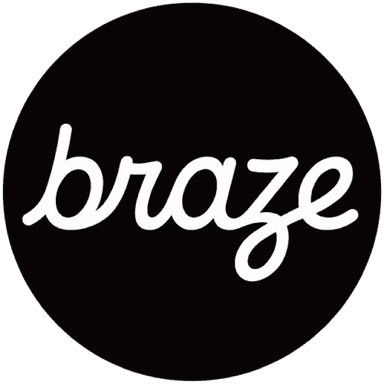
Team Braze
Acquisition often gets the spotlight when brands want to grow, but customer retention delivers compounding benefits by driving higher lifetime value, boosting profitability and strengthening brand loyalty. Research by Frederick Reichheld of Bain & Company (the inventor of the net promoter score) shows that increasing customer retention rates by just 5% can improve profits by between 25% to 95%.
That’s why customer retention management needs to be part of your growth strategy. Retention doesn’t happen by chance. It requires a clear, consistent approach, involving people, processes, and platforms.
In this guide, we’ll explore what customer retention management really means, how it differs from broader retention efforts and how you can build a system that not only keeps customers coming back but turns them into loyal advocates.
Contents
- What is customer retention management?
- Why customer retention management matters for sustainable growth
- Customer retention vs. customer retention management
- How to build a successful customer retention management system
- Real-world customer retention management in action
- Final thoughts
- FAQs about customer retention management
What is customer retention management?
Customer retention management is the process of keeping customers engaged through growing the strength of your relationship with them over time.
Customer retention management focuses on understanding customer needs, acting on their feedback, and prioritizing the factors that matter most to loyalty and lifetime value. Instead of treating retention as an outcome, businesses make it an ongoing priority built into how they operate.
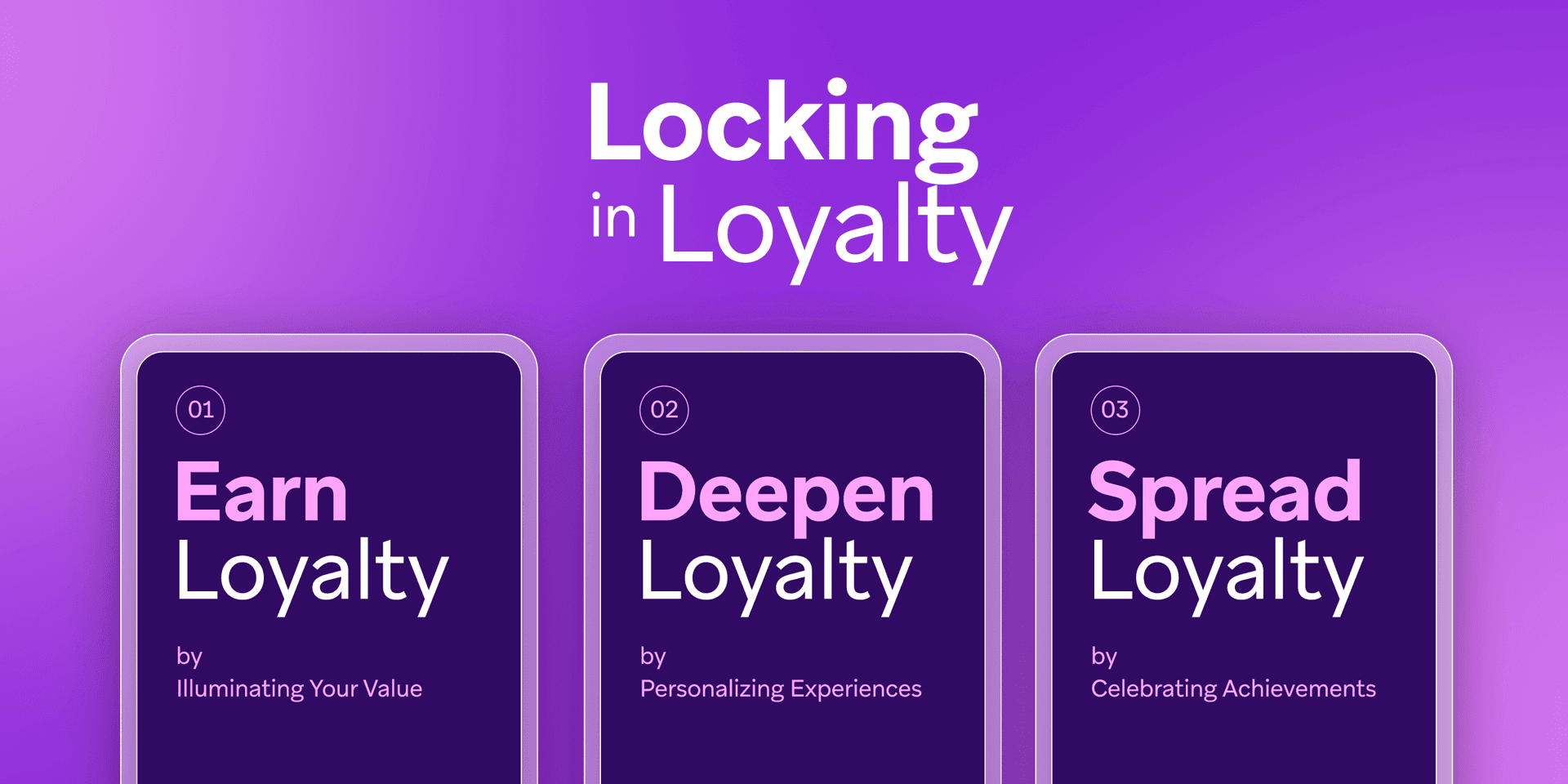
A strong customer retention management strategy typically revolves around three key actions:
- Understanding what makes customers stay. Tools like Net Promoter Score (NPS), or your own brand surveys help to uncover how customers feel about your product, service and the customer experience they have with you–and why they stick around.
- Closing the loop based on feedback. Listening is only half the equation. Acting quickly and meaningfully on what customers share, helps to build trust and prevent churn before it happens.
- Prioritizing churn drivers by financial impact. Not every issue carries the same weight. Smart retention management identifies which churn risks hit revenue hardest, so teams can focus their efforts where it matters most.
Effective customer retention management is rarely confined to a single team. Teams like Marketing, Product, and Support should all work together to deliver experiences that meet customer expectations and build trust.
Why customer retention matters for sustainable growth
Marketers know that loyalty is a competitive advantage. Loyal customers cost less to serve, can drive more referrals, and often contribute significantly to profits. But building and sustaining that loyalty looks different today than it did even a few years ago.
According to Braze research, trust and product quality are now 3.3X more important for repeat purchases than discounts. Customers want brands they can rely on; once trust and affordability are in place, repeat business becomes far more likely. Retention management gives brands the tools and strategies to earn that trust consistently, even in challenging economic conditions.
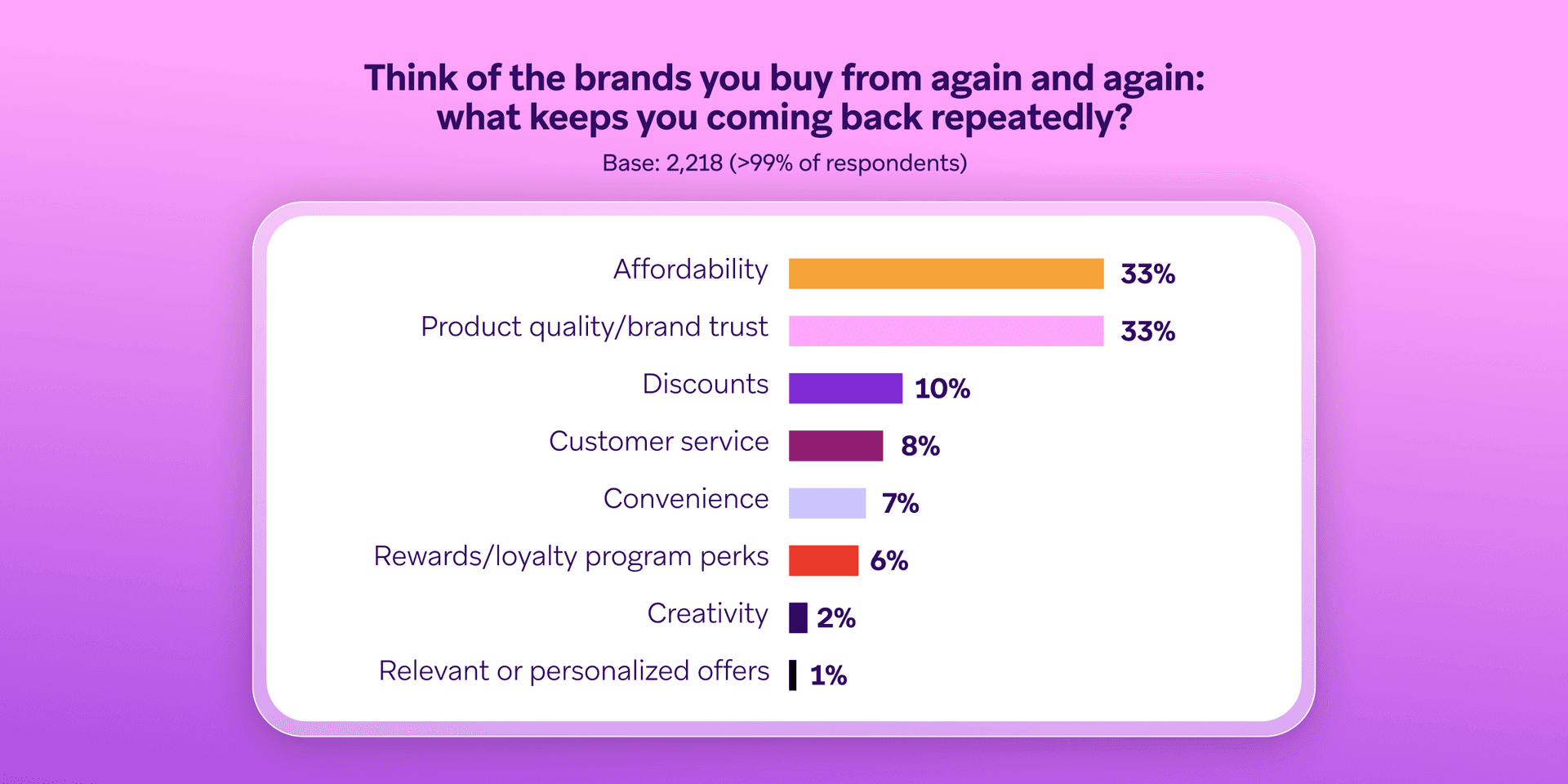
At the same time, consumers are becoming more cautious about how brands use their data. Nearly half (47%) of survey participants said they lacked confidence that brands handle their information responsibly and a growing number are less willing to share personal data than before. Today’s retention strategies must balance personalization with transparency, meeting expectations for value while respecting privacy and consent.
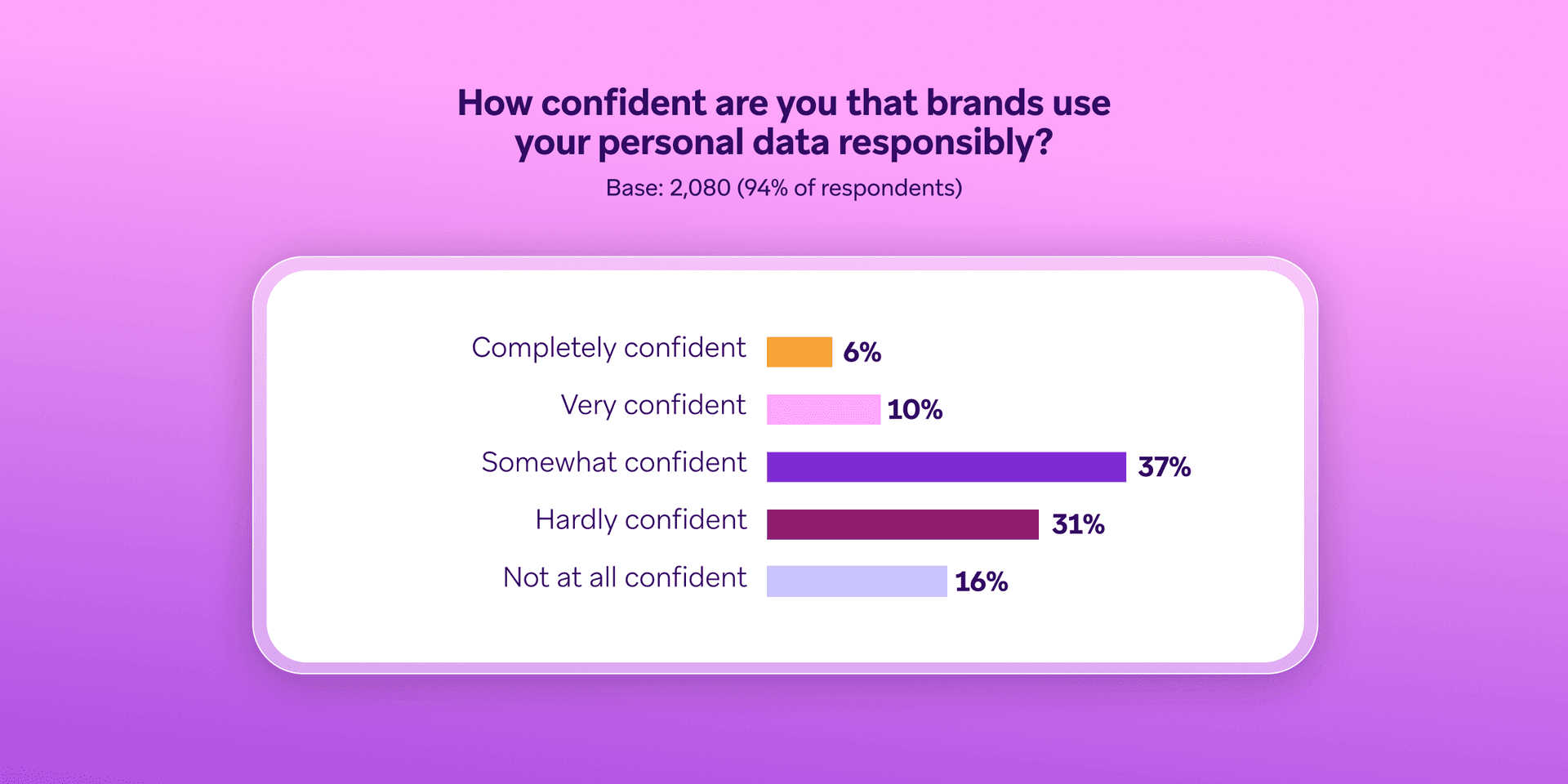
Customers also want personalized experiences, but they are selective about how those experiences are delivered. While 80% of consumers see personalization as important to purchasing decisions, only 29% feel comfortable with AI-driven personalization today. Brands that invest in thoughtful, human-centered retention strategies have a major opportunity to stand out, using real-time insights to create meaningful connections without undermining trust.
Customer retention vs. customer retention management
While they sound similar, customer retention and customer retention management are two distinct concepts. Uunderstanding the difference is critical for building a strategy that delivers results.
Customer retention is the outcome. Often viewed as a metric, it reflects how well you’re meeting customer needs, providing value, and building loyalty. High retention rates can signal strong relationships and long-term revenue potential, while low rates often highlight missed opportunities or customer dissatisfaction.
Customer retention management, on the other hand, is the strategic process behind that outcome. It’s the system you build to influence retention proactively, through data, campaigns, feedback loops, personalization, and cross-functional coordination. Instead of hoping customers stay, retention management makes it a goal supported by clear actions, accountability, and ongoing optimization.
Retention shows you where you stand. Retention management gives you the tools to improve your position.
How to build a successful customer retention management system
Retention management works best when it puts the customer first to create consistent, connected experiences. Here’s what a system needs to deliver lasting results:
Integrate customer data across touchpoints
Retention starts with connected insights. Without a unified and complete view of customer interactions across teams and systems, brands risk missing key signals that impact loyalty. Bringing together behavioral, transactional, and feedback data helps brands segment smarter, personalize messaging and respond quickly to changes in customer behavior.
Build precise segments based on behaviors, preferences, and lifecycle stages
Smart segmentation helps make campaigns more targeted, timely, and effective. Build segments based on factors like where customers are at in the lifecycle, the types of products they most often buy, how often they open your app, etc.
Map the customer journey to identify key opportunities for retention
Understanding how customers move through their lifecycle helps brands anticipate needs, remove friction, and deliver timely value. Journey mapping highlights critical moments–onboarding, feature adoption, renewal points–where proactive engagement can make the biggest difference. Braze Predictive Suite helps track moments and make predictions based on behavioral, real-time data, taking the guesswork out of who is more likely to stay or go.
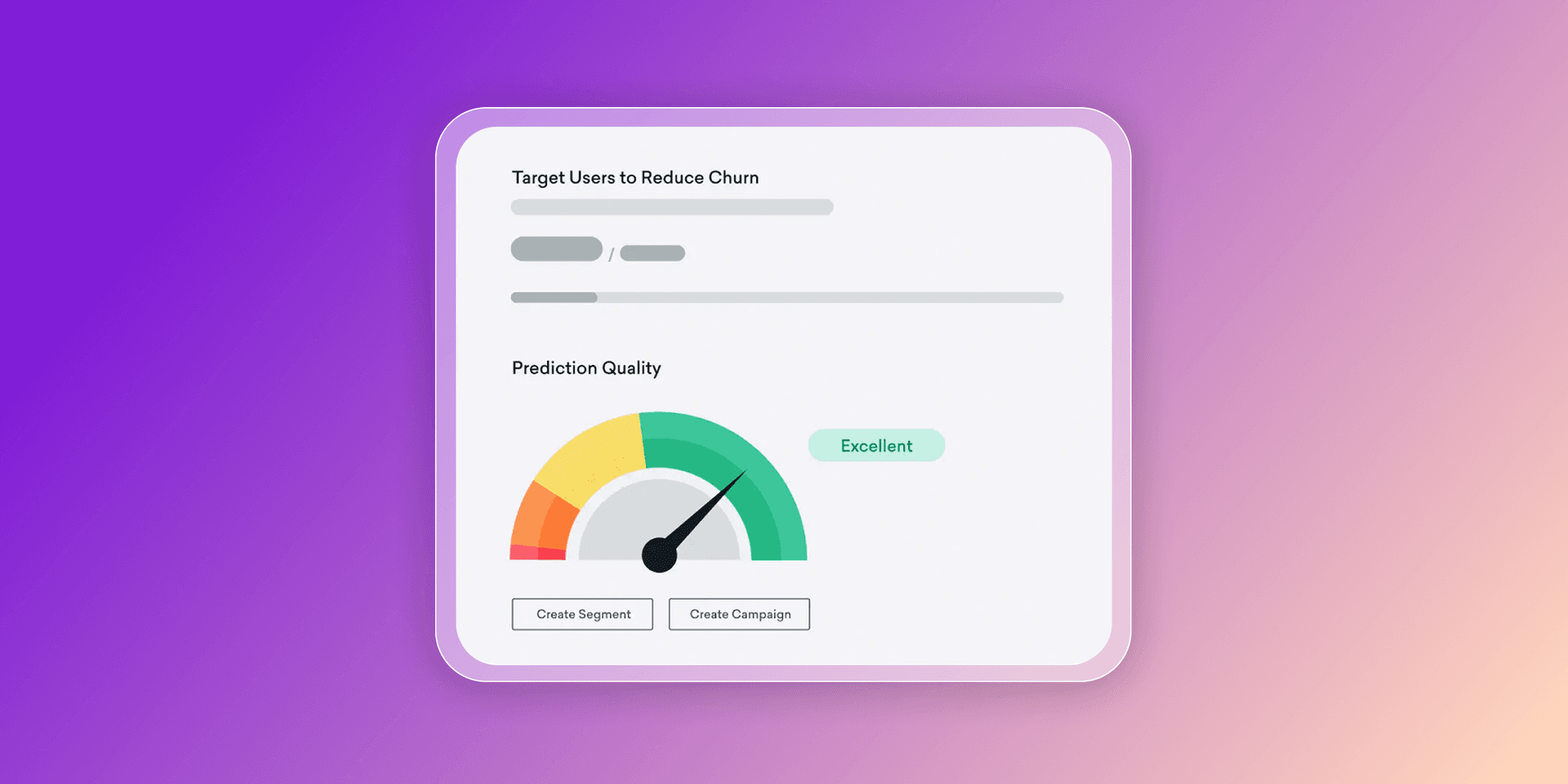
Personalize experiences in real time to strengthen customer relationships
Using customer data to personalize messages, offers, and in-product experiences helps brands build deeper connections and drive loyalty. Personalization based on streaming data helps brands stay relevant as customer needs and behaviors evolve.
Orchestrate cross-channel campaigns that align with customer behavior
Coordinated campaigns delivered across channels like email, push, SMS, and in-app messaging help reach customers where they interact to guide them through the journey thoughtfully. Win-back campaigns, feature adoption nudges, loyalty rewards, and abandoned intent reminders are all powerful tools for keeping engagement strong.
The Braze Inspiration Guide is here to help. This collection of 50 inspirational use cases—inspired by real campaigns carried out by Braze customers—can be easily customized to fit your unique needs and address your unique challenges.
Measure performance and optimize strategies based on real-time insights
Continuous improvement is at the heart of effective retention management. Look for tools that make it easier to test different messaging strategies, track performance in real time, and optimize campaigns based on customer behaviors and business outcomes. Analyzing engagement patterns, identifying churn signals, and experimenting with new approaches allows brands to adapt quickly and strengthen loyalty over time.
Real-world customer retention management in action
PureGym, Bloom & Wild, and Second Dinner each faced a different challenge, but all three used Braze to build smarter, faster retention strategies. From personalized content to real-time messaging, these brands turned customer engagement into long-term loyalty.
PureGym powers loyalty with timely, targeted member communications
PureGym, the UK's largest gym chain, needed a better way to keep its 1.1 million members informed about critical updates, like gym closures, refurbishments, and new staff announcements.
The problem
Manual email scheduling made it difficult for their Member Services team to deliver timely, personalized messages and missed notifications risked damaging the member experience and overall satisfaction.
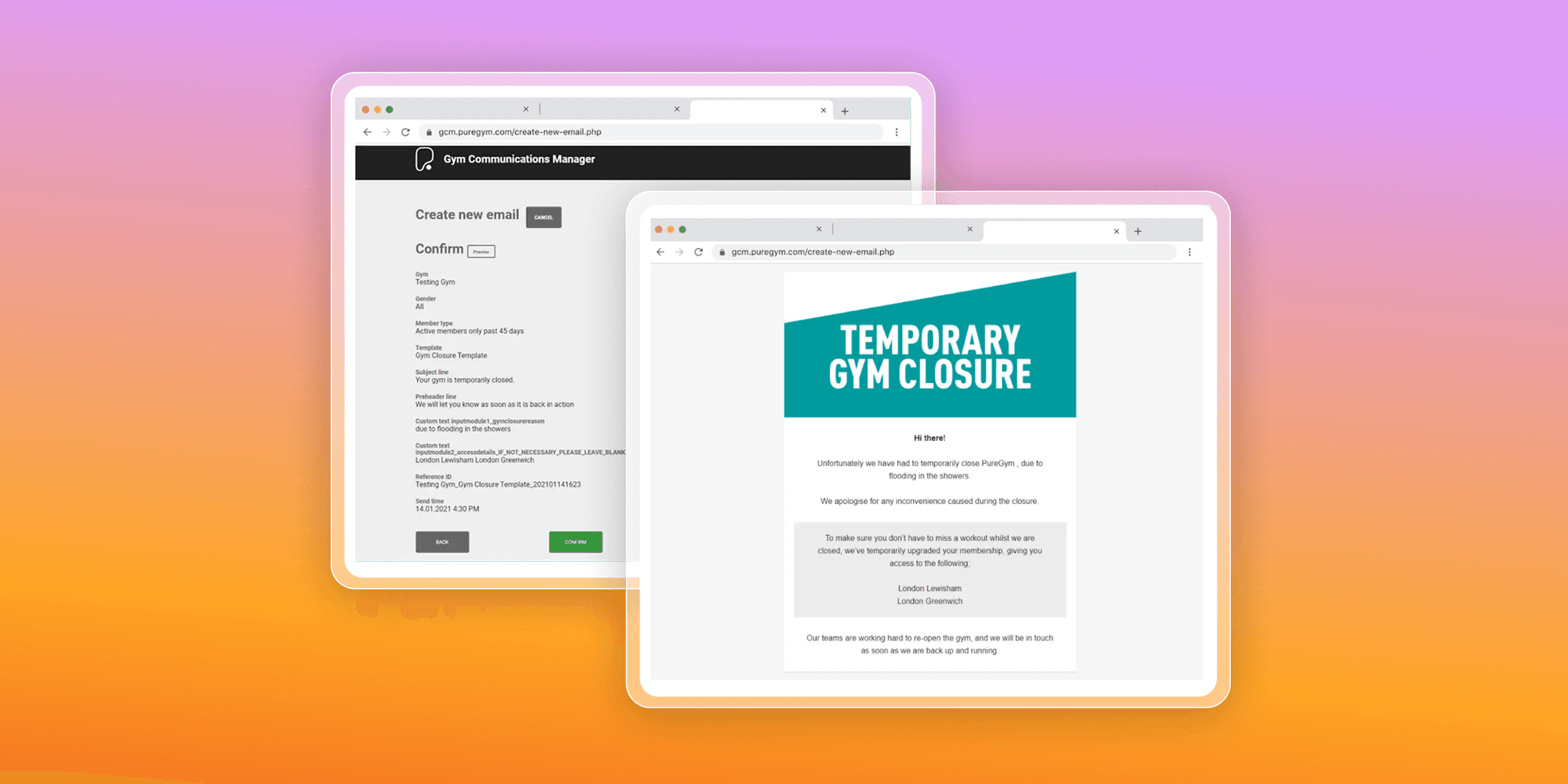
The strategy
PureGym partnered with Braze and ConsultMyApp to build the Gym Communications Manager (GCM)—a centralized tool using API-triggered campaigns and dynamic segmentation. With 20+ prebuilt templates, the Member Services team could easily tailor and send localized messages based on gym location, member activity, and demographics.
The results
PureGym strengthened its connection with local gym communities and enhanced the day-to-day experience for members. Campaigns powered by the Braze API and dynamic segmentation achieved a 55% open rate across 129,635 unique recipients, helping PureGym keep members engaged, informed, and more likely to maintain their memberships over time.
Bloom & Wild boosts customer engagement with scalable, personalized email campaigns
Bloom & Wild, one of Europe’s leading online flower delivery services, needed a better way to deliver personalized email experiences across five different markets.
The problem
Their original system, building static image-based emails, was time-consuming, hard to update, and didn’t scale easily for different languages, links, or customer segments. Without the ability to easily tailor communications, Bloom & Wild risked missing opportunities to engage and retain customers more effectively.
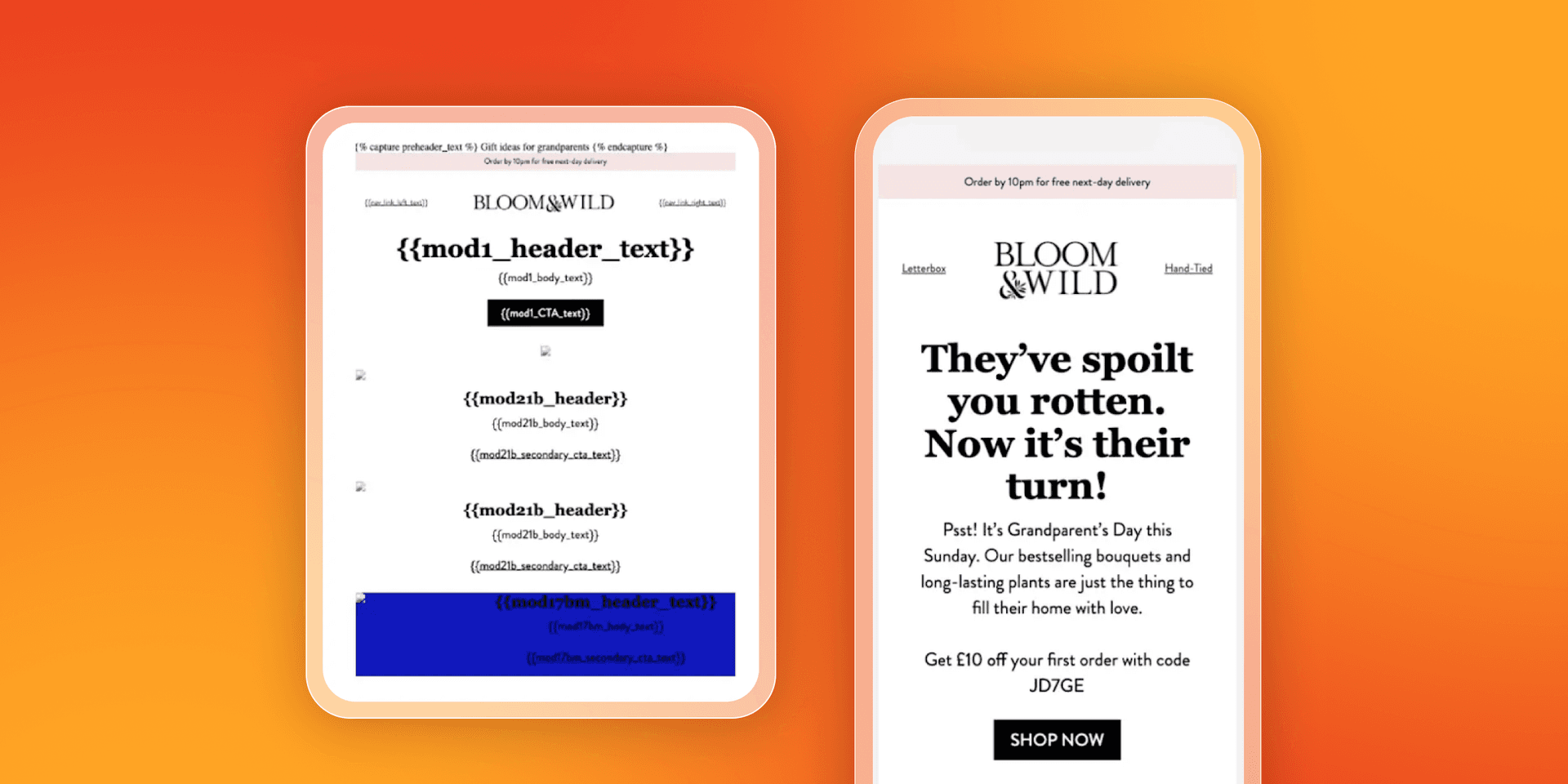
The strategy
To make personalization scalable, Bloom & Wild adopted Braze Content Blocks, creating flexible, reusable modules that allowed them to customize email content quickly without technical overhead. Their CRM team could swap in different headlines, images, and offers depending on audience, market, and device, without needing to rebuild campaigns from scratch. This modular approach made it faster to craft highly relevant, targeted messages that matched customer needs and preferences in real time.
The results
Bloom & Wild achieved an 85% reduction in campaign build time, allowing their team to focus more on crafting personalized, impactful communications. With faster iteration and better alignment between messaging and customer interests, they saw significant improvements in customer engagement, average order value and overall campaign performance, thereby strengthening long-term loyalty through smarter, more relevant outreach.
Second Dinner keeps players engaged with personalized, in-game content
After the successful launch of MARVEL SNAP, Second Dinner needed a strategy to maintain player engagement over the long term.
The problem
Keeping players excited and invested meant delivering fresh, relevant updates, without interrupting gameplay or requiring heavy development resources. With no scalable solution, sustaining momentum and loyalty could have become a major challenge.
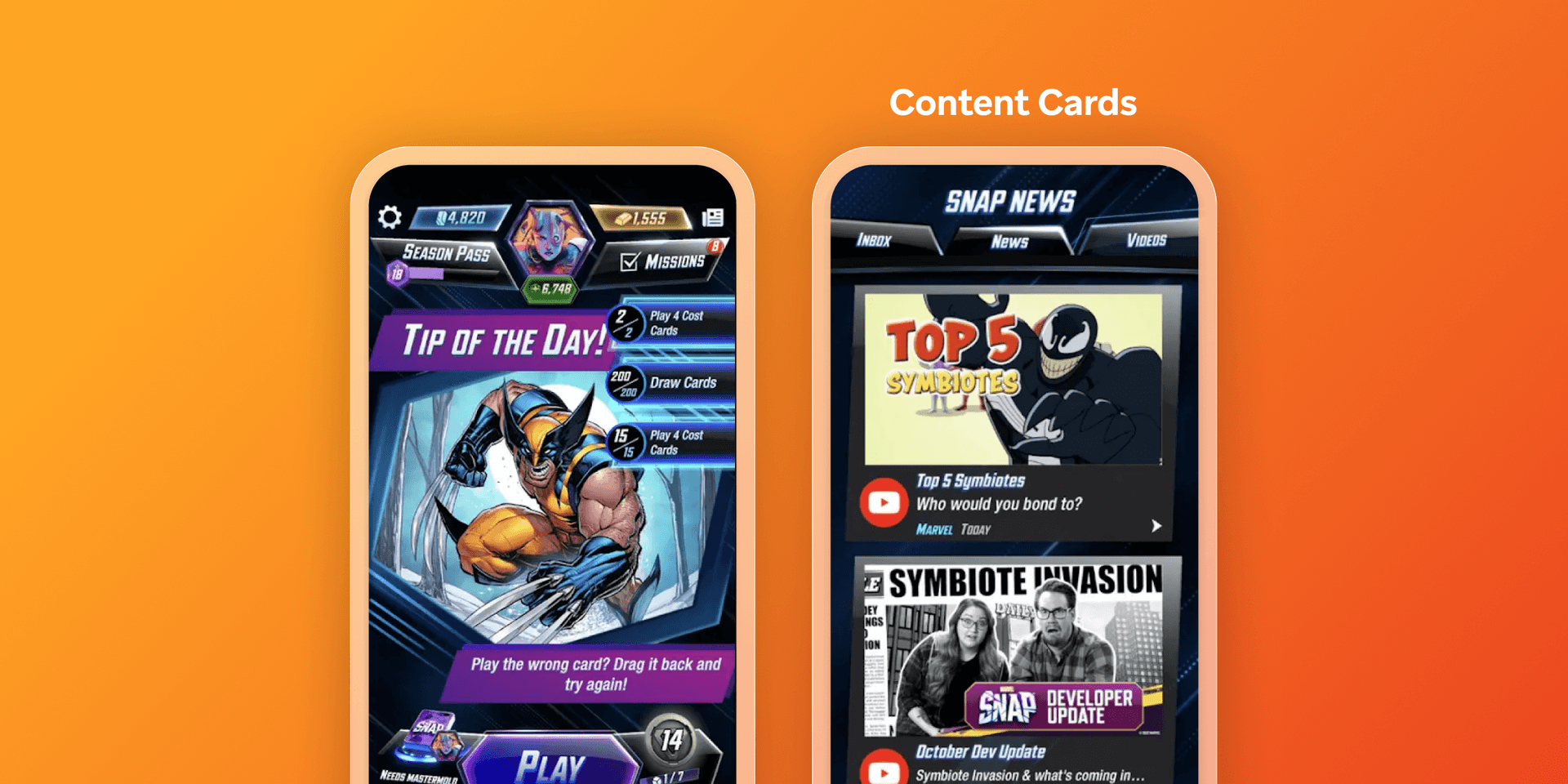
The strategy
Second Dinner used Braze Content Cards to deliver personalized, non-intrusive messages within the game, highlighting news, events, fan art, and community content without disrupting play. The team could update messaging instantly, with no app releases or dev overhead. Paired with Braze Canvas, this setup supported responsive, behavior-based player journeys.
The results
Second Dinner’s strategy delivered powerful retention results. 96% of players identified Content Cards as their first source of awareness for new campaigns, and Content Cards drove 86% of traffic to the campaign’s voting page. They boosted engagement, but also strengthened long-term player loyalty, reducing reliance on paid media and making the player community a central part of MARVEL SNAP’s ongoing success.
Final thoughts
Customer retention management supports every part of the customer journey. It gives teams the tools and structure to act on insight, respond in real time and deliver value in ways that build trust and loyalty.
When marketing, product, support and success work in sync, retention becomes a shared focus, embedded into daily operations and long-term strategy. The outcomes are positive and help brands to build a more resilient path to growth.
With acquisition costs growing higher and more competitors vying for attention than ever before, companies need to keep customers coming back by establishing themselves as the brand of choice. But how?
FAQs about customer retention management
Customer retention management is the process businesses use to maintain and grow relationships with existing customers. It focuses on increasing loyalty, reducing churn and improving customer lifetime value through coordinated strategies, real-time data and personalized engagement.
Customer retention is the outcome, such as the percentage of customers who stay with a brand over time. Customer retention management is the strategic approach behind that outcome, combining systems, messaging, and optimization to actively influence loyalty and growth.
Customer retention management often uses tools like customer engagement platforms, real-time personalization engines, cross-channel campaign orchestration tools and performance analytics dashboards. Platforms like Braze help brands activate data, personalize experiences and optimize campaigns to drive stronger retention.
A customer retention manager focuses on strategies and programs that strengthen customer relationships, increase engagement, and reduce churn. Their work typically spans segmentation, lifecycle marketing, feedback analysis, and cross-team collaboration to improve the customer experience over time.
Brands measure retention management success through key metrics like retention rate, churn rate, customer lifetime value (CLV), engagement rates, and campaign performance. Real-time reporting tools make it easier to track these indicators, identify trends, and optimize strategies for continuous improvement.
Related Tags
Be Absolutely Engaging.™
Sign up for regular updates from Braze.
Related Content
View the Blog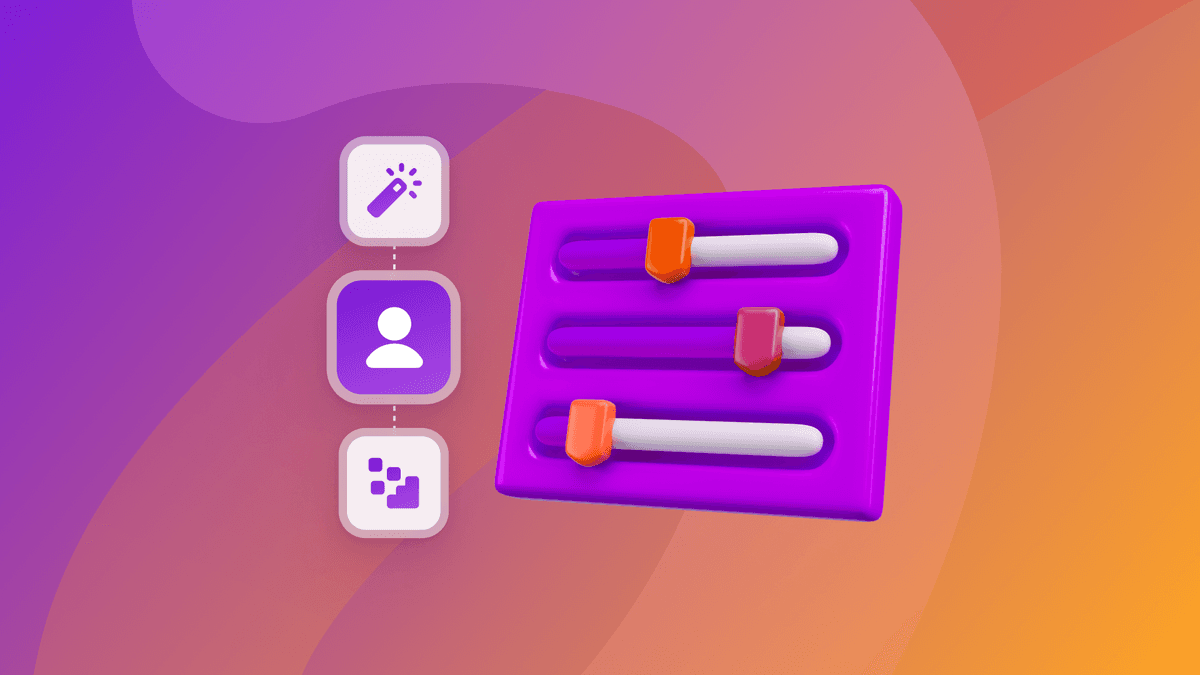
How behavioral marketing turns data into personalized experiences

Team Braze
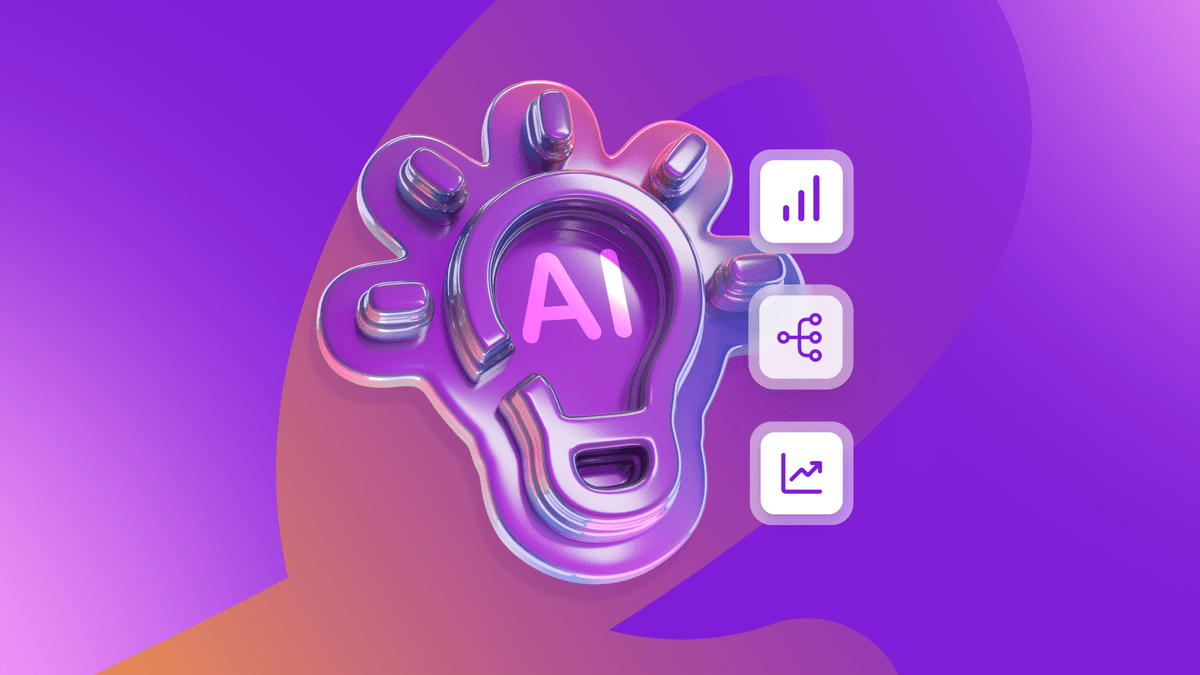
Enterprise generative AI: Transforming data, decisions, and customer experiences

Team Braze
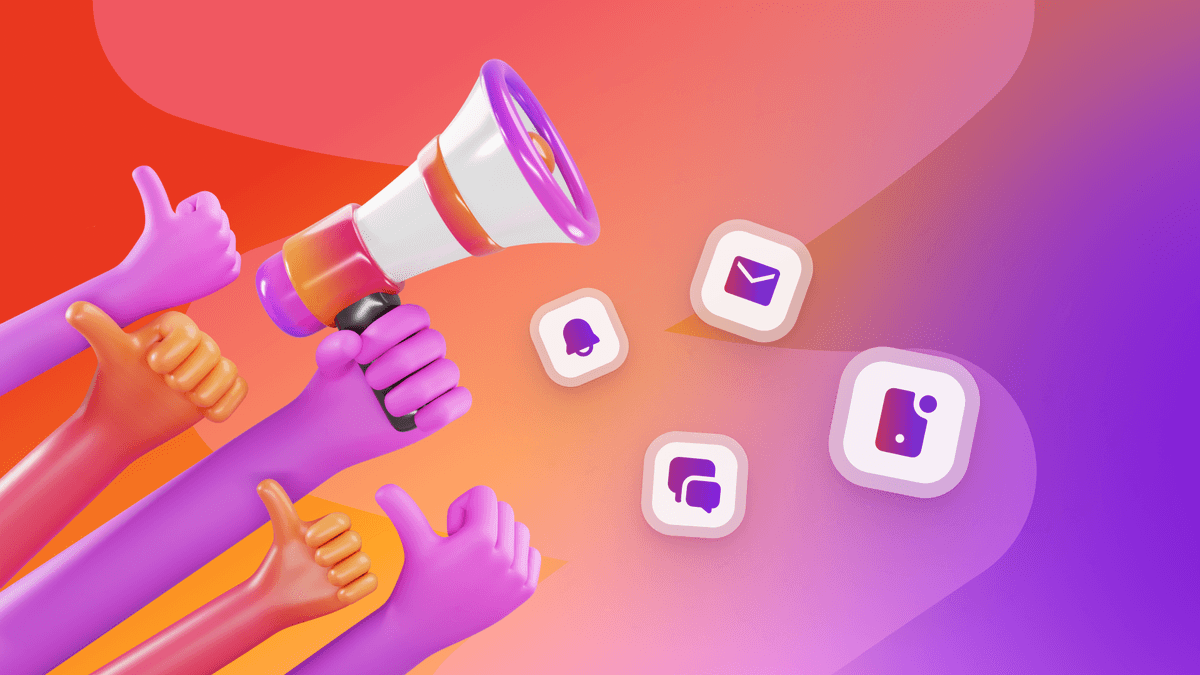
Omnichannel personalization: Delivering consistent, connected customer experiences
